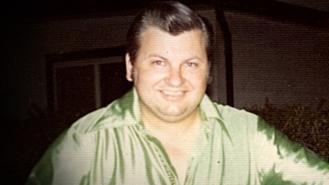
Bruce McArthur: The shopping mall Santa who murdered eight men
It was January 2018 in Toronto, Canada, when residents of Mallory Crescent peered outside to see an influx of police activity in their middle-class neighbourhood. Between the years of 2010 and 2017, a total of eight men vanished from Church and Wellesley, Toronto’s LGBTQ-oriented district that is also known as the Gay Village. However, the nation was blissfully unaware that they had found themselves victims to a prolific serial killer that had gone undetected for almost a decade.
Bruce McArthur was born in Lindsay, Ontario on 8th October 1951. He was raised in a nondescript brick bungalow on rural Palestine Road. For generations, the McArthur family had farmed and ran a foster home. ‘There were always kids coming and going,’ recalled family friend, Mary Anne MacEachern. As an adult, McArthur settled down with his wife, Janice, and their two children. Unbeknownst to McArthur’s family, he had begun having affairs with men in the 1990s.
McArthur found employment as a salesman for McGregor Hosiery and Stansfield, and he purchased a family home in Oshawa. In the mid to late 1990s, McArthur came out, and by 1997, he and Janice had separated. He moved to Toronto because there was a much more prevalent gay scene. Here, McArthur became a familiar face in the Gay Village, where he met Skandaraj Navaratnam, originally from Sri Lanka, and the duo embarked on a romantic relationship.
In 2001, McArthur pleaded guilty to attacking a man with a metal pipe. After the guilty plea, he saw Dr. Marie-France Dionne, a psychologist, who prepared a report for his sentencing on charges of assault with a deadly weapon and assault causing bodily harm. She noted he was embarrassed by his arrest, and that he had no recollection of it.
She wrote: ‘There is no trace of psychosis, no trace of hallucinations or delusions, no trace of mood disorder and no trace of any personality disorder or anti-social behaviour. As a matter of fact, Mr. McArthur is well oriented in space, time and toward people.’
McArthur was handed a two-year conditional sentence and was ordered to abstain from the consumption of amyl nitrate, colloquially known as poppers. He was also ordered to not be in the presence of male sex workers and to not visit a specific section of downtown Toronto that included the Gay Village. That did not deter McArthur, and he took to setting up profiles on online dating apps.
McArthur and Skandaraj continued dating up until at least 2008. At the time, McArthur was working as a self-employed landscaper under the name ‘Artistic Design’. During the holiday season, he moonlighted as a Santa Claus for local malls. With his white hair, beard, and outwardly jolly demeanour, he looked the perfect part, but behind that façade of normalcy, McArthur was concealing a deep and dark secret.
In 2010, Skandaraj inexplicably vanished, but it was not until two years later that ‘Project Houston’ was set up to investigate his disappearance, alongside the disappearances of Majeed Kayhan and Abdulbasir Faizi. All three men were frequent visitors of the Gay Village, and all had disappeared between 2010 and 2012. Skandaraj was last seen in the early morning hours of 6th September 2010, when he was spotted leaving a gay bar with an unknown man.
The following year, an anonymous tip came to investigators about McArthur’s relationship with Skandaraj. This same tipster suggested that McArthur had also known Majeed. McArthur was questioned, and while he admitted he knew both men from the local gay scene, he denied that he was ever in a romantic relationship with Skandaraj. However, he did acknowledge that Majeed had once worked for him in his landscaping business and that they had once had a sexual encounter. He claimed to know nothing about either disappearance and after an 18-month investigation, Project Houston was closed due to a lack of evidence that anything criminal had taken place.
Then on 26th June 2017, Andrew Kinsman disappeared. He was observed on surveillance cameras climbing into a red van and this surveillance was handed over to investigators. They were able to identify that the red van was a 2004 Dodge Caravan. A town hall meeting was held to discuss the disappearance of Andrew as well as another gay man, Selim Esen. The meeting brought in an influx of media attention to the disappearances and curiously, just two weeks later, McArthur purchased a new vehicle.
As investigators would soon enough learn, he was the owner of a red 2004 Dodge Caravan.
Another task force was set up to investigate these two disappearances, Project Prism. Investigators began looking into Andrew’s background, and they discovered that on his calendar, he had an engagement with ‘Bruce’ scheduled. Investigators now knew the brand of the car involved and a potential suspect’s name. They just needed to somehow connect the two.
Investigators sought from the provincial Ministry of Transportation a list of 2003 – 2006 Dodge Caravans registered in Toronto. There were 6,181, but only five were linked to the name Bruce. They quickly discovered that Bruce McArthur was the only one who owned the 2004 model. One of the investigators who worked on Project Houston recognized the name immediately.
Investigators embarked on McArthur’s apartment, where they obtained surveillance footage of him driving the red 2004 Dodge Caravan. They were able to trace the license plate and track it down to a wrecking yard where they seized it. A forensic examination was conducted of the vehicle, and it revealed traces of Andrew and Selim’s DNA. In December, investigators acquired a search warrant for McArthur’s apartment where they found graphic photographs of several men, all of whom were deceased and posed.
The investigators had searched the apartment covertly, and after the grim findings, they placed McArthur on surveillance. On 18th January 2019, they were watching over his apartment when McArthur appeared with a man. He unlocked the front door and welcomed the man inside. Investigators feared that this man could be an intended victim; they broke down the door, arrested McArthur and found the terrified man, nude and tied to the bed.
With McArthur behind bars, the investigation would finally uncover the truth about him, that he was a predatory serial killer that had been killing men since 2010. He had been using his landscaping business to conceal human remains. In total, eight bodies were found buried in various locations that were connected to McArthur, including the bodies of Skandaraj, Majeed, Abdulbasir, Andrew and Selim.
Many of the remains were found hidden inside large plastic planters at a home on Mallory Crescent. The homeowner had allowed McArthur to keep items on their property in exchange for lawn care. He was completely unaware that McArthur was using it as a dumping ground for his victims.
Many of McArthur’s victims were immigrants of Middle Eastern or South Asian descent. While they were all members of the LGBTQ+ community in Toronto, some of them were not openly gay and lived that aspect of their lives in private. Ontario Superior Court of Justice John McMahon commented on this, stating: ‘There is evidence Mr. McArthur sought out and exploited these vulnerabilities to continue his crimes undetected.’
Bruce McArthur pleaded guilty to all eight murders. He was sentenced to life in prison without the possibility of parole for 25 years.








